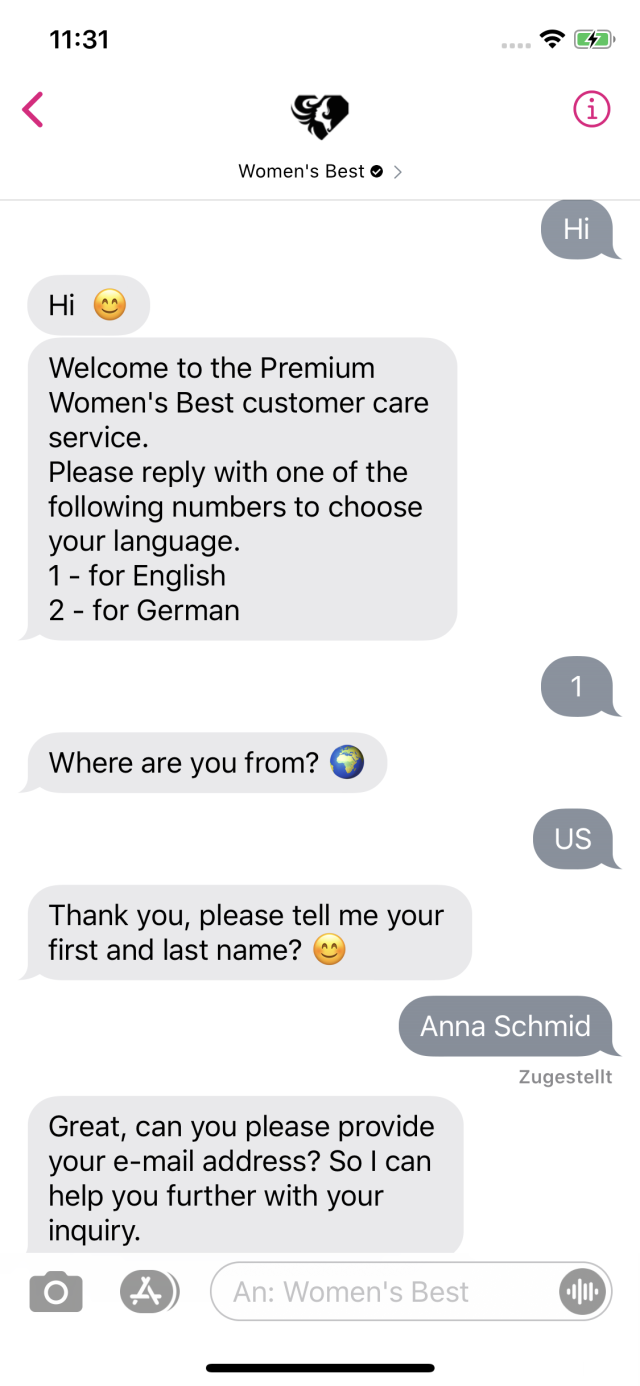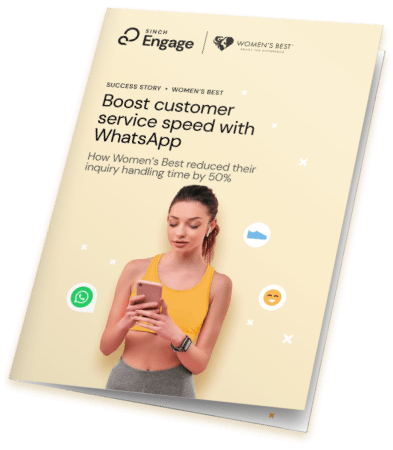What is unified messaging? We'll explain what the term means, give examples, and show the advantages of a unified messaging software in action.
When your customer support team answers inquiries via WhatsApp on a company cell phone, conducts Facebook Messenger chats using the Facebook business profile, and manages web chats with internal company software... then, that's impractical, stressful, inefficient, and confusing!
This is exactly where the concept of unified messaging comes in. Because the idea of managing all your messages in one place ensures that all requests can be processed in a centralized manner, in a standardized form and available to everyone at all times.
In the following article, we'll explain exactly what this can look like, what advantages the approach offers, and how you can set this up for your own business.
What is unified messaging?
Unified messaging stands for the standardization of incoming and outgoing messages in a central inbox. The idea is to bring messages from different channels together on a single, unified platform.
So, instead of managing WhatsApp chats in one software and web chat through a separate software, unified messaging brings everything together in a central location, so that the entire team can access it at any time and from anywhere.
This centralized communication can either refer to internal company messages or to external customer communication. In the following, we focus on external communication.
What's the difference between unified messaging and unified communication?
The terms unified messaging and unified communication are often used interchangeably, but this is not entirely correct.
Unified messaging combines communication via time-shifted (asynchronous) channels such as email or messenger.
Unified communication, on the other hand, refers to the standardization of simultaneous communication, such as phone calls.
What are the advantages of a central communication solution?
All-in-one communication brings many advantages for companies.
- Increased efficiency: a single inbox saves time and resources
- Better scaling: unified messaging offers opportunities for automation across all channels (chatbots, reusable templates, automated ticketing, etc.)
- More transparency: messages are no longer lost and are easily accessible for everyone.
- Added flexibility: Unified messaging platforms enable employees to access messages even when working out of the office or from home, which ensures more agile communication.
- Better data insight: Centralized customer communication enables centralized data collection and thus better insights to improve service.
- Improved user experience: Customers can use the channels they prefer, resulting in a higher interaction rate and greater satisfaction.
- More professional customer communication: A standardized messaging solution ensures that the support team can record inquiries more quickly, forward them to the right contact person and therefore answer them sooner. Customers thus experience professional communication.
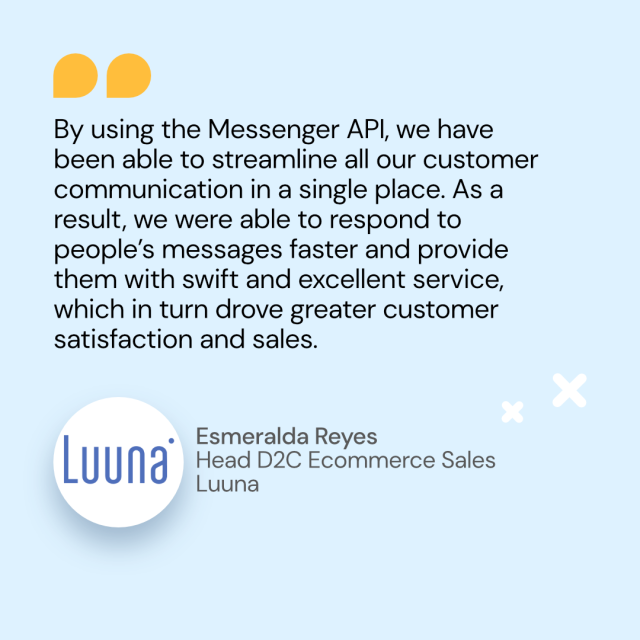
Which channels does unified messaging cover?
Unified messaging is about bringing together channels for asynchronous communication. This includes "conversational messaging channels" such as messenger apps and sometimes also web chats, for example when requests are handled by a chatbot in a first step and remaining open questions are then answered later by the service team-
Common unified messaging channels are:
- Facebook Messenger
- Telegram
- Instagram Direct Messenger
- Viber
- Chatbots
Important note: Conversations that take place in real time, such as over a phone call, don't fall under unified messaging solutions, but are mapped by unified communication solutions.
Examples of unified messaging
How companies implement unified messaging in practice can be very diverse. The following examples show some possibilities.
iMessage and WhatsApp
With a centralized messaging solution, you can, for example, manage incoming chats from two different instant messaging apps in one software.
For instance, you could unify your Apple and WhatsApp Messages. How does this work? For customers, nothing changes. Apple users can send you iMessages, while Android users can stick to WhatsApp messages.
On your end, however, with a unified software, everything ends up in the same inbox.
The international sports brand, Women's Best, for instance, uses the all-in-one platform from Sinch Engage to centrally manage requests via Apple Messages and WhatsApp.
By offering its customers more contact channels, Women's Best can reach more users, offer the customers their service on the users' preferred apps, and all of this happens without complicating the internal processes.
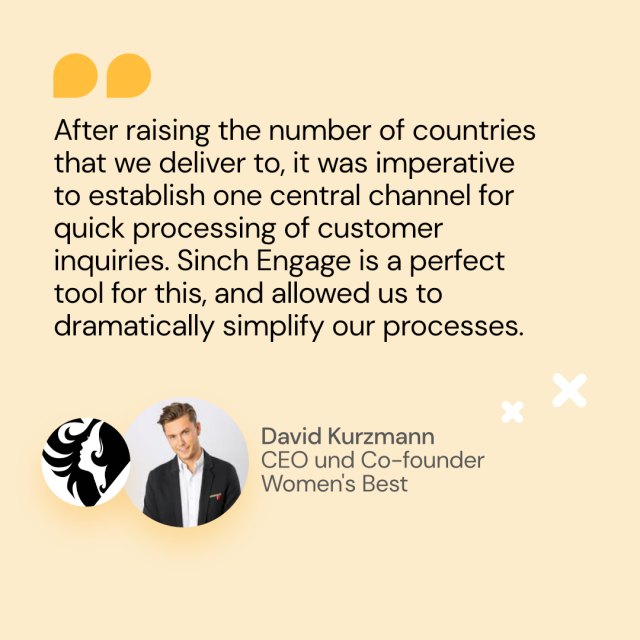
Your own app and WhatsApp
If your company has developed its own app, it's of course an advantage that as many requests as possible come in through the native app. However, this isn't always so convenient for customers. They may prefer WhatsApp or Instagram Direct instead of downloading a company app.
Unified messaging can standardize this so that your own app can include a messaging app integration. With this, customers can continue to use their preferred channel, while companies can still process all requests centrally, no matter from which application the message came from.
This is exactly how the German energy supplier E WIE EINFACH manages its customer inquiries. Although the energy company has its own app for all matters, many customer inquiries also come in via WhatsApp. In order to streamline these channels, the company introduced a unified messaging solution with Sinch Engage.
This enables E WIE EINFACH to offer a better user experience and process all inquiries centrally and efficiently. And all this without much effort!
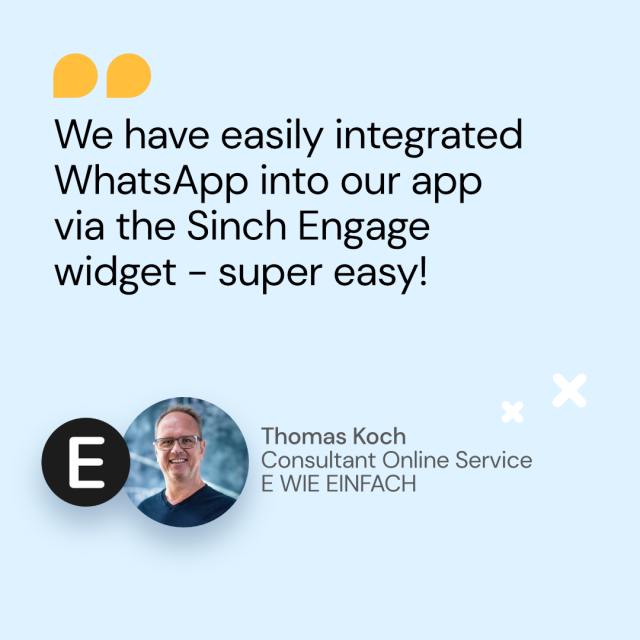
Business solutions for unified messaging
If you want to use unified messaging in customer communication, you need an appropriate tech solution. Companies can set this up themselves, but this naturally requires IT resources and ties them up in the long term.
The simpler (and more cost-effective) option is to use ready-made software solutions for unified messaging. These are provided by providers such as Sinch Engage. Typically, this is a cloud or web-based platform.
What do you need to consider when choosing a provider?
If you are a company looking for a unified messaging solution, you should clarify the following questions in advance:
- Does the solution offer all channels that are relevant for you?
- Can you scale the platform without much effort (for example, easily adding new channels)?
- Can chatbots also be integrated?
- What about the integration of your own systems, such as CRM?
- Can you assign requests centrally to suitable agents? Can this only be done manually, or can it also be automated?
- Does the platform meet data compliance requirements?
- Can you set up the solution without much effort and is the interface intuitive to use?
At Sinch Engage, all of these options are included in our conversational tool for unified messaging, and you also have a competent team at your side who can advise you if you have any questions.

